団体の基礎構造に関する調査(ポーランド)PL-JIGSコードブック
2011

Sign up for access to the world's latest research
Abstract
The respondents received IDs and were given a choice of writing them on the questionnaires sheets. Among all the responses (225), more than half (126) were signed with IDs, including 35 from Mazowieckie prefecture, 63 from Dolnoslaskie, and 28 from Lubelskie. Out of the total 3004 questionnaires, 336 (11.85%) were returned with the information that the addressee was unknown. In the second stage, the rate of return was 190 out of total 1,119 (10.63%).




































































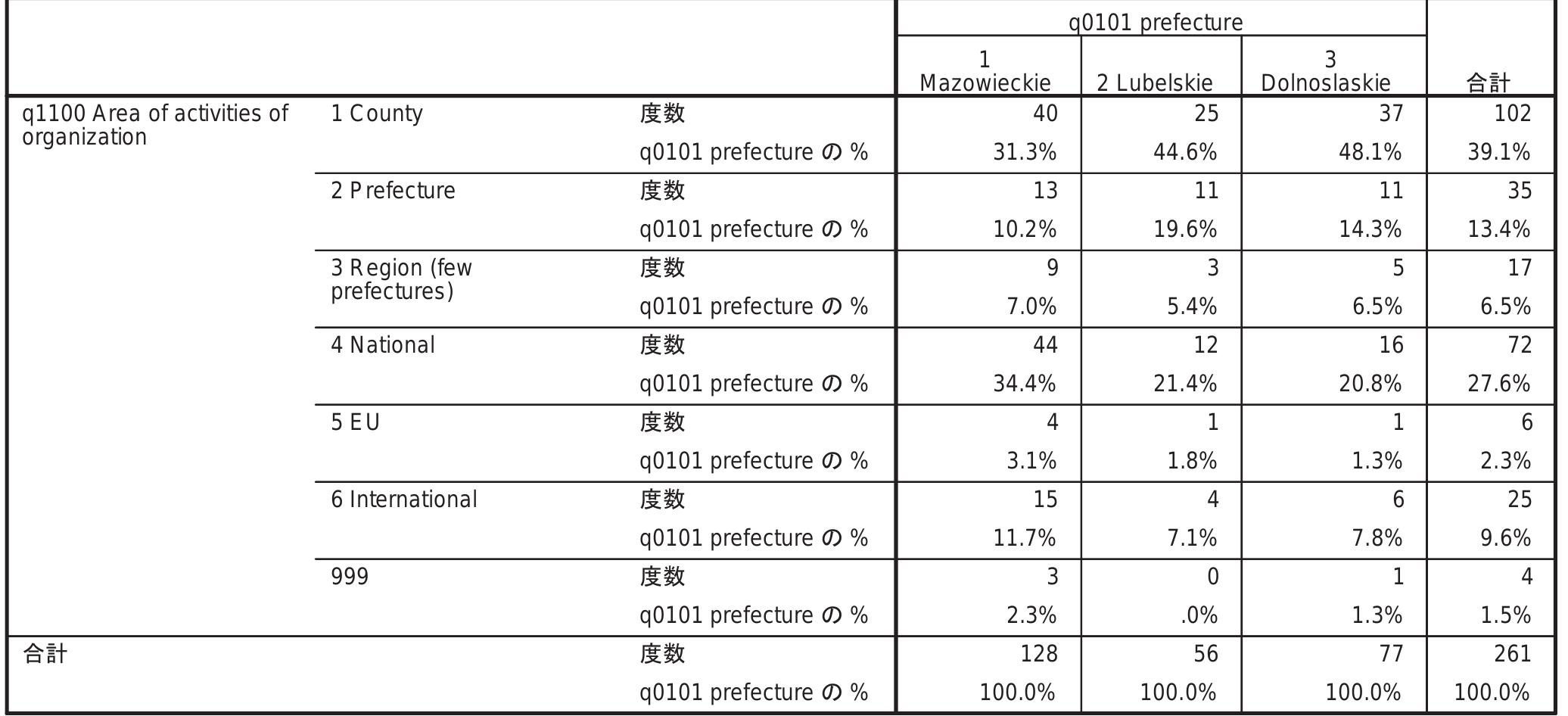








































![Q17. What is the relation of your organization with the folowing organs of public administration? Mark ([] ) answers separetly for local and central administration.](https://figures.academia-assets.com/106221998/table_110.jpg)























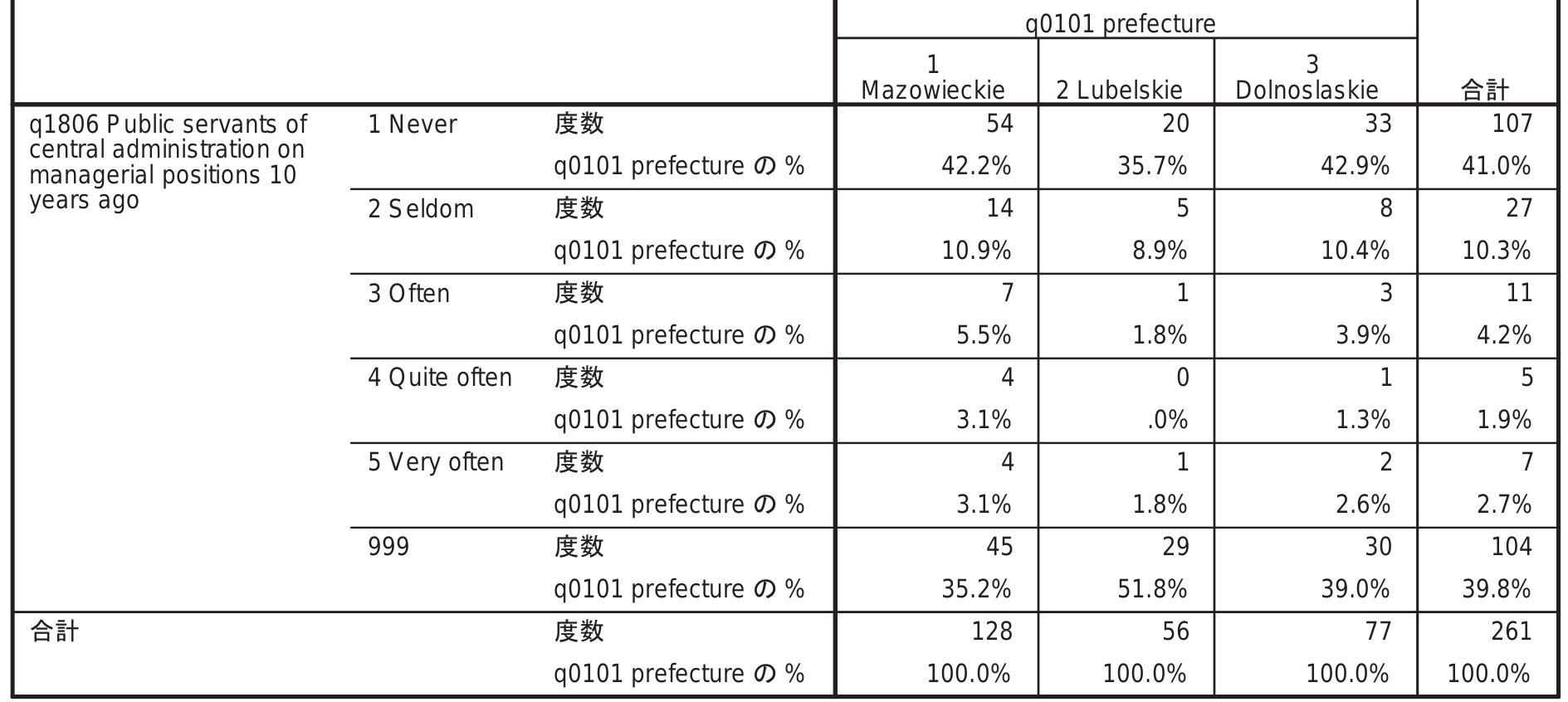




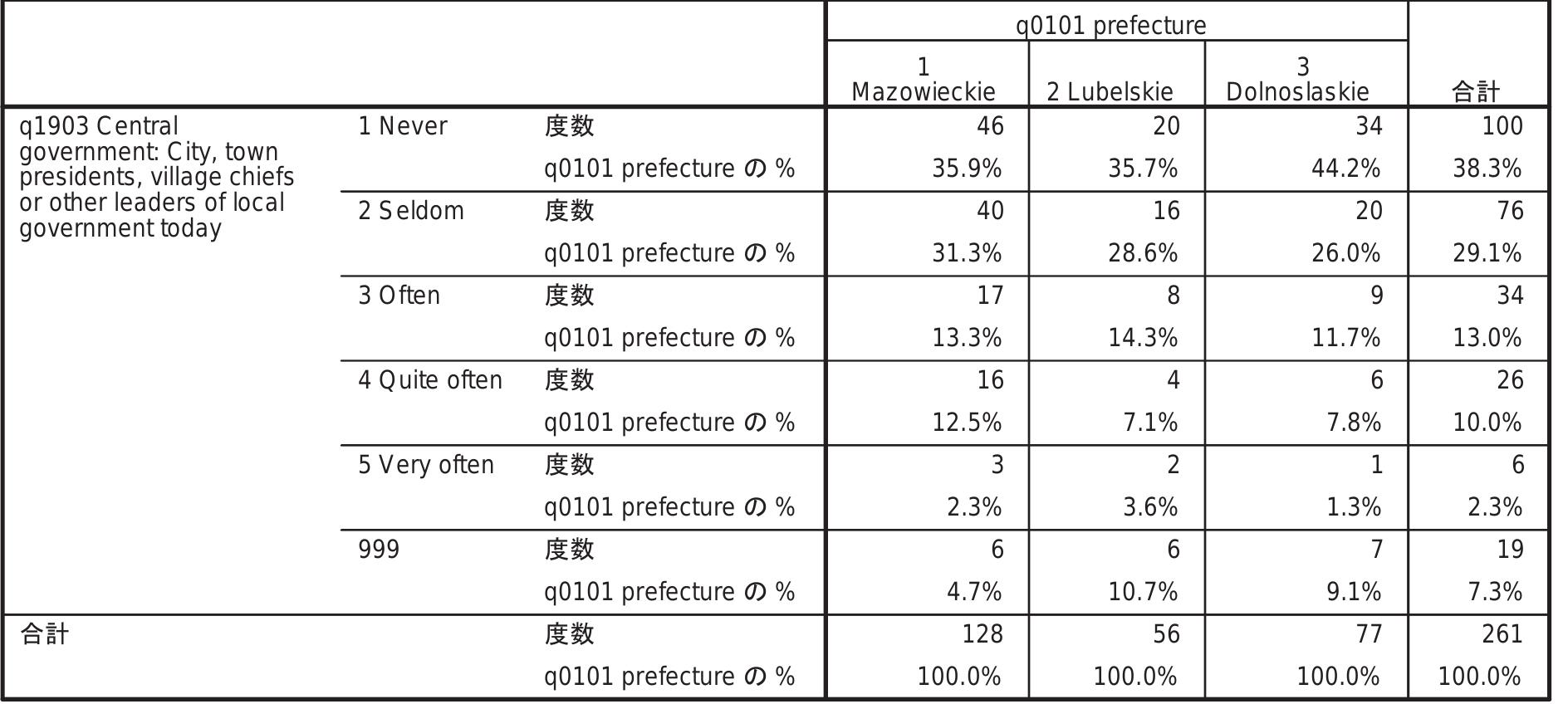

















































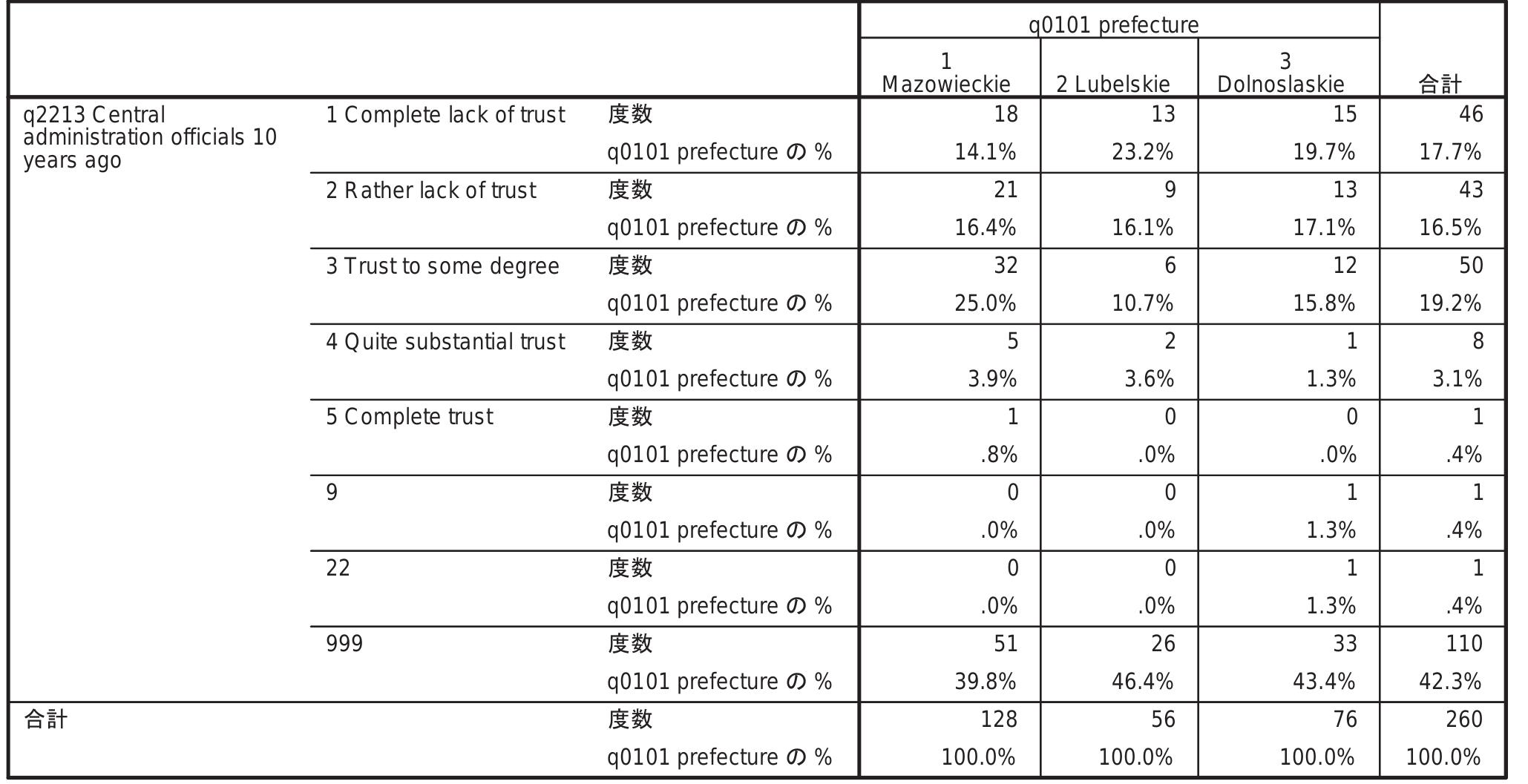







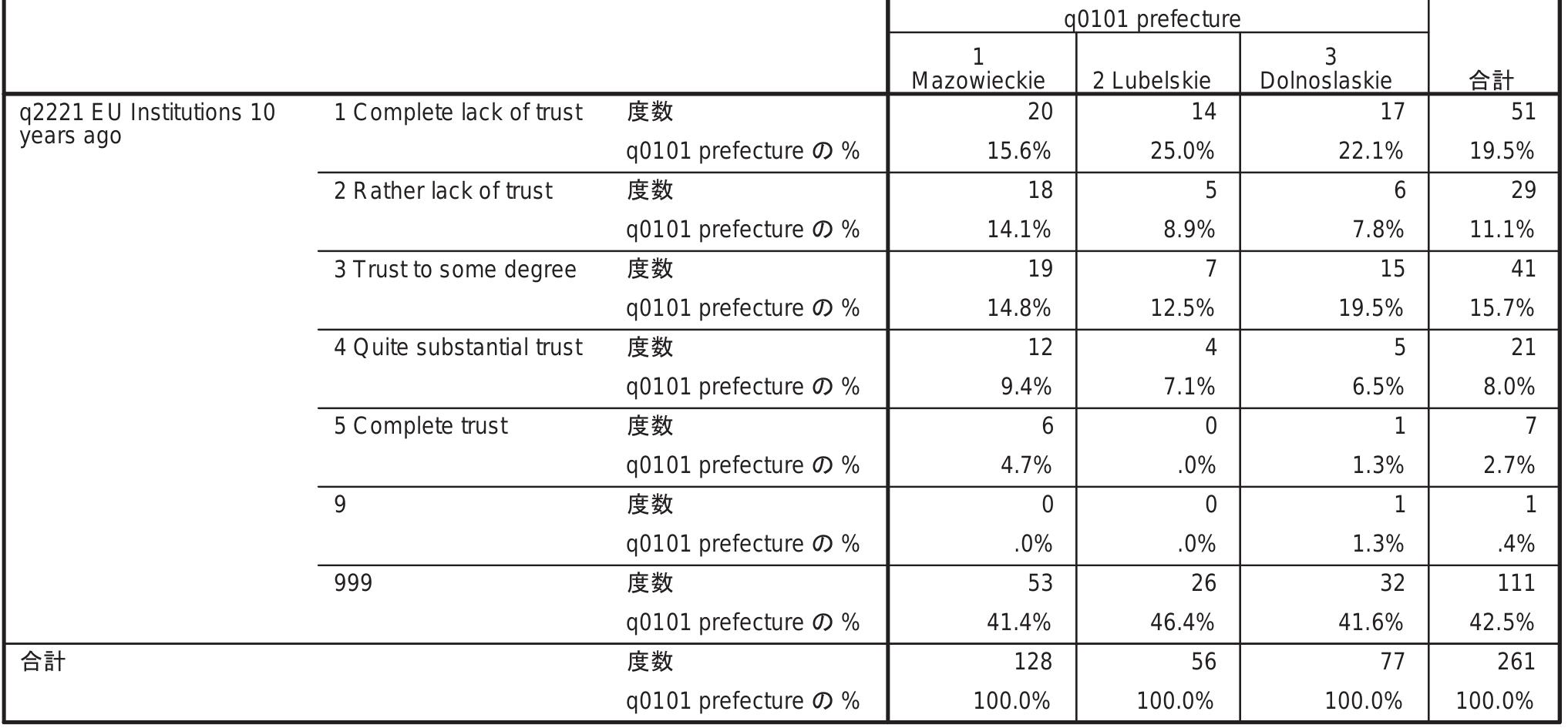
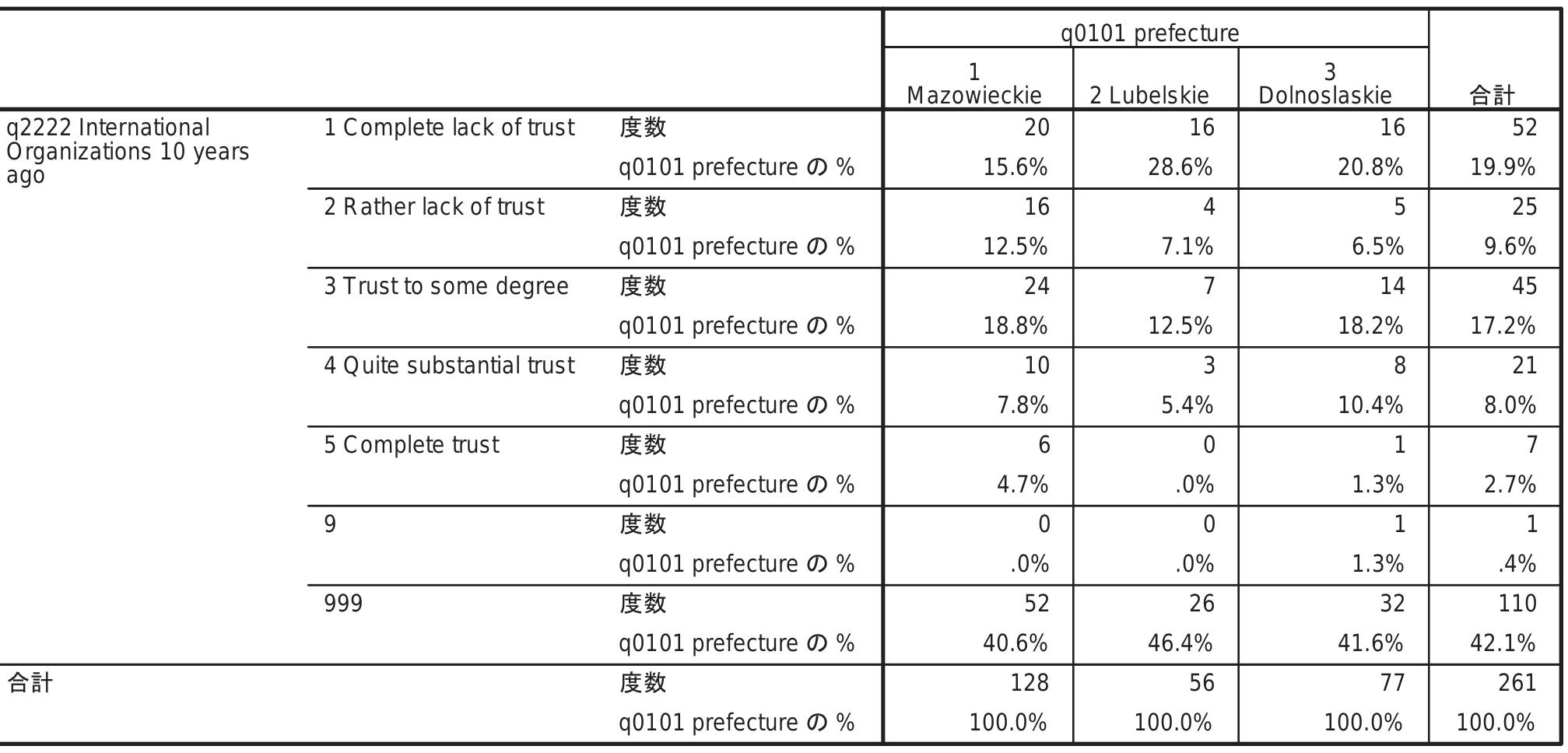














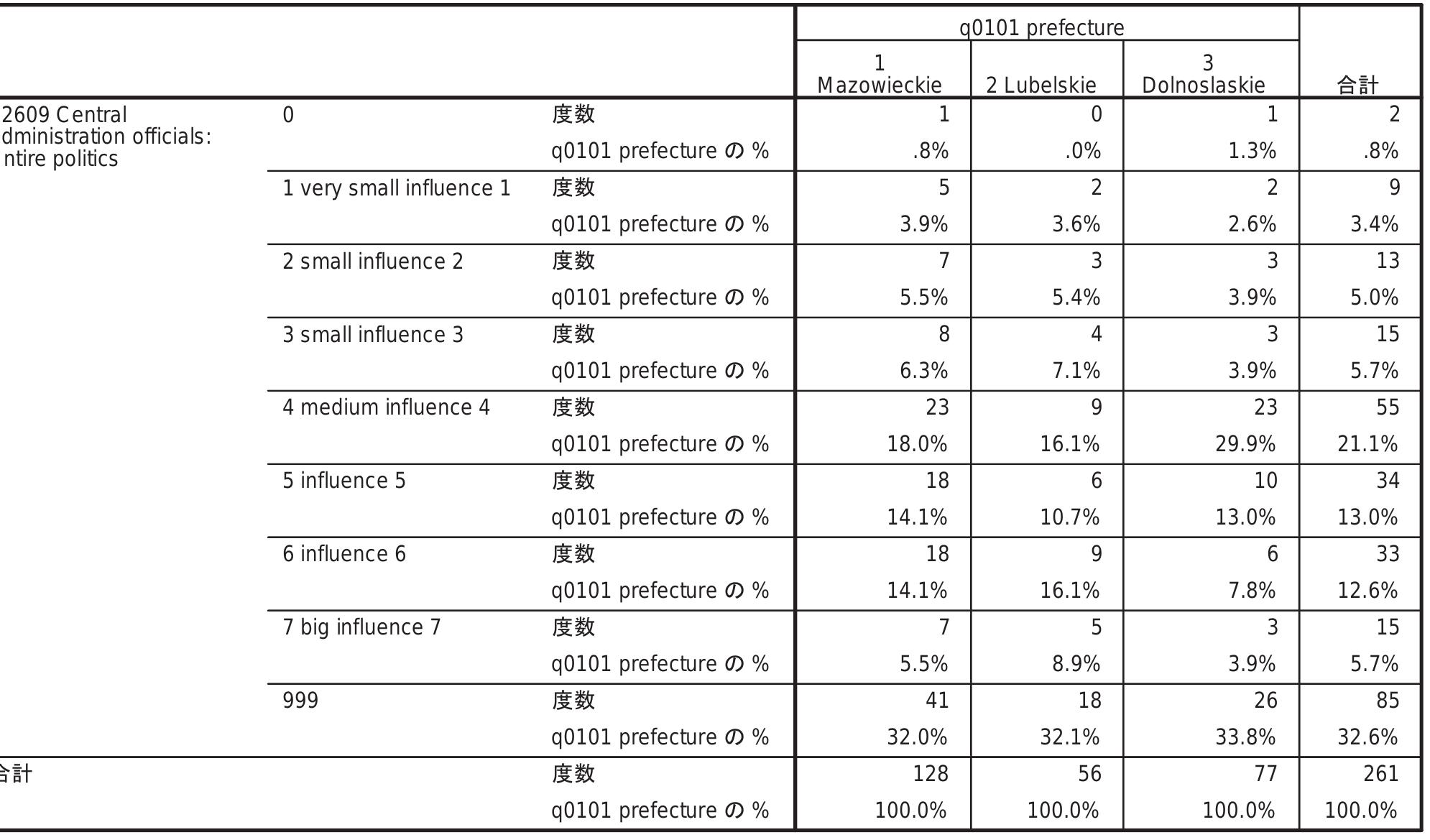

















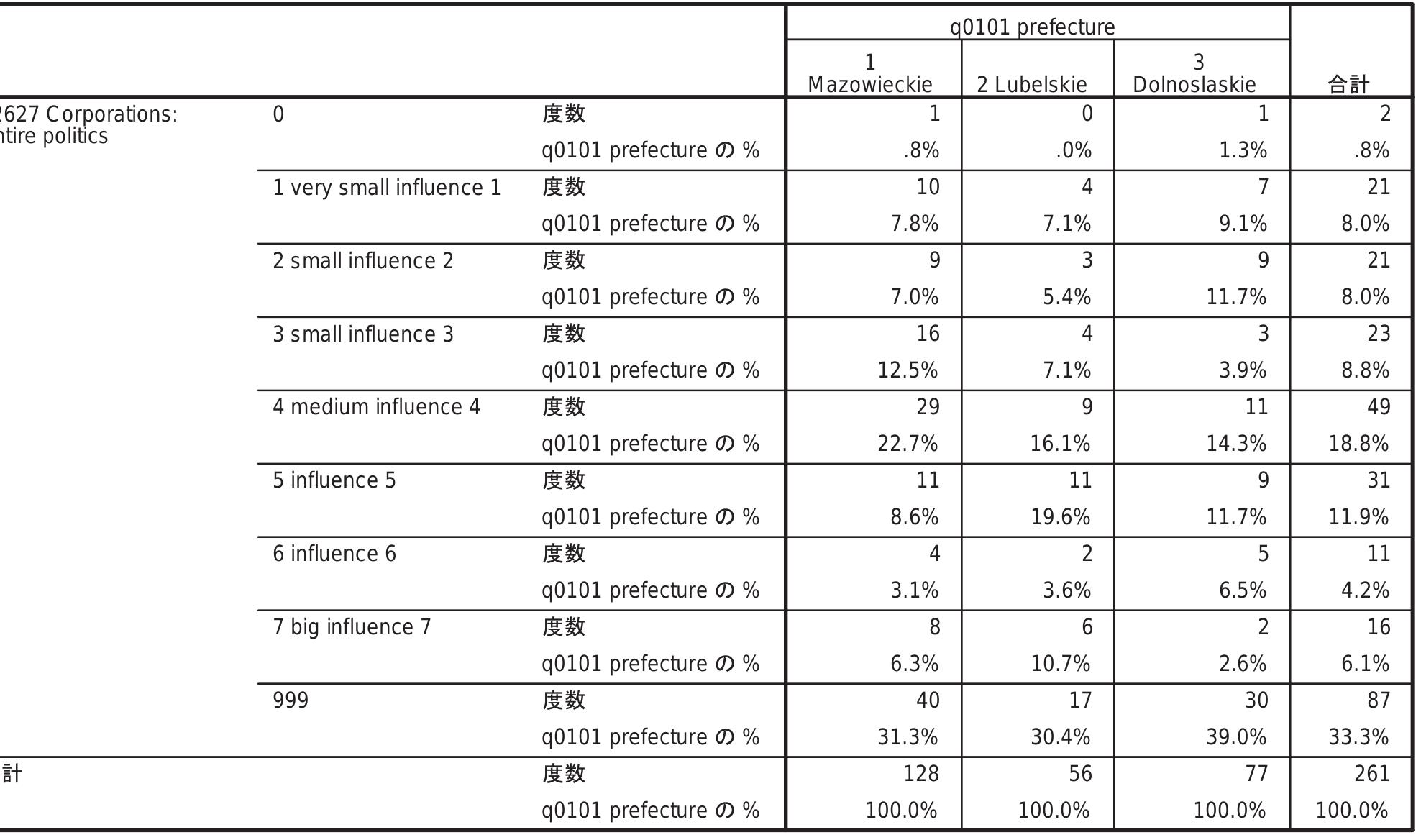






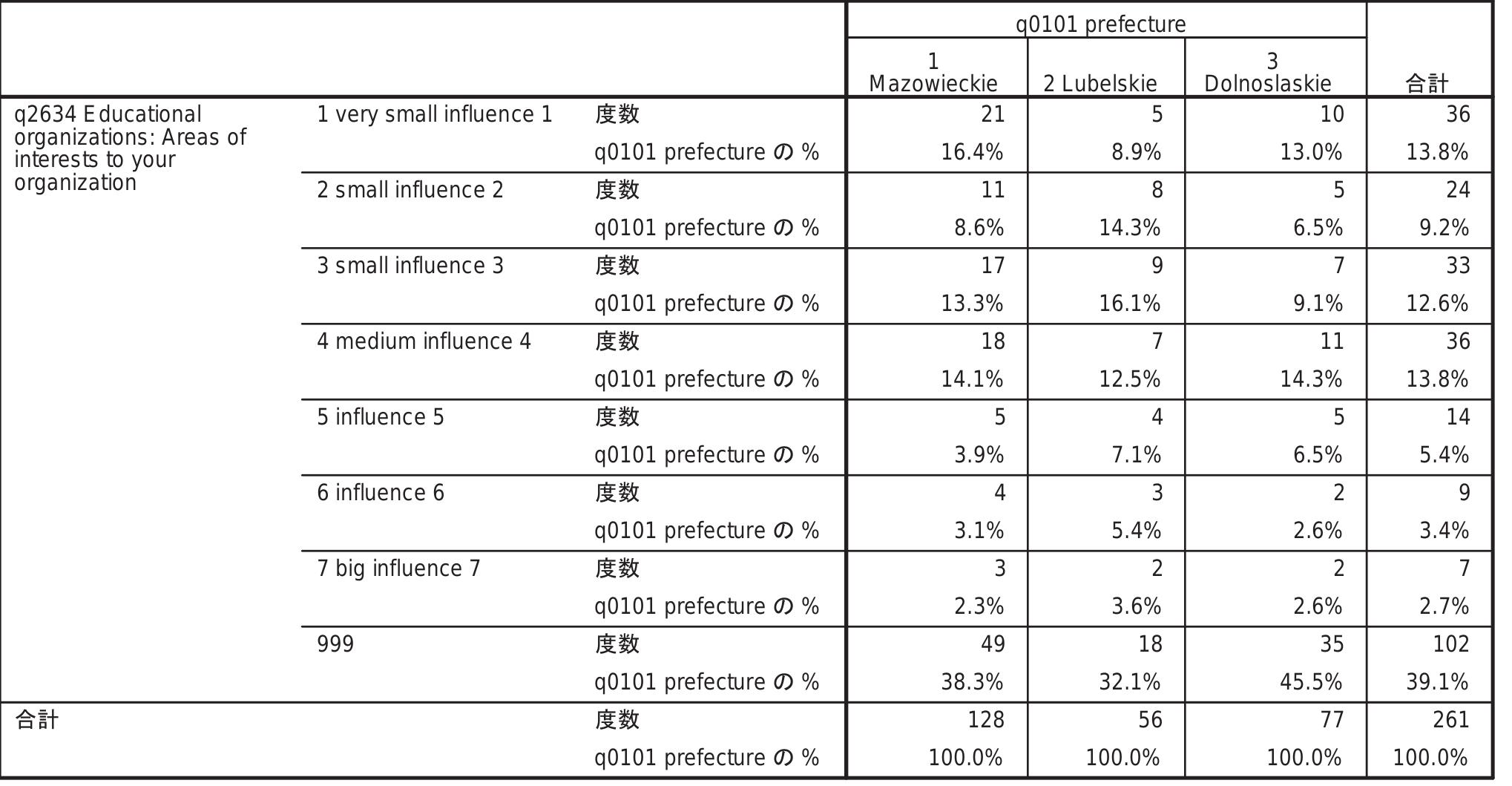



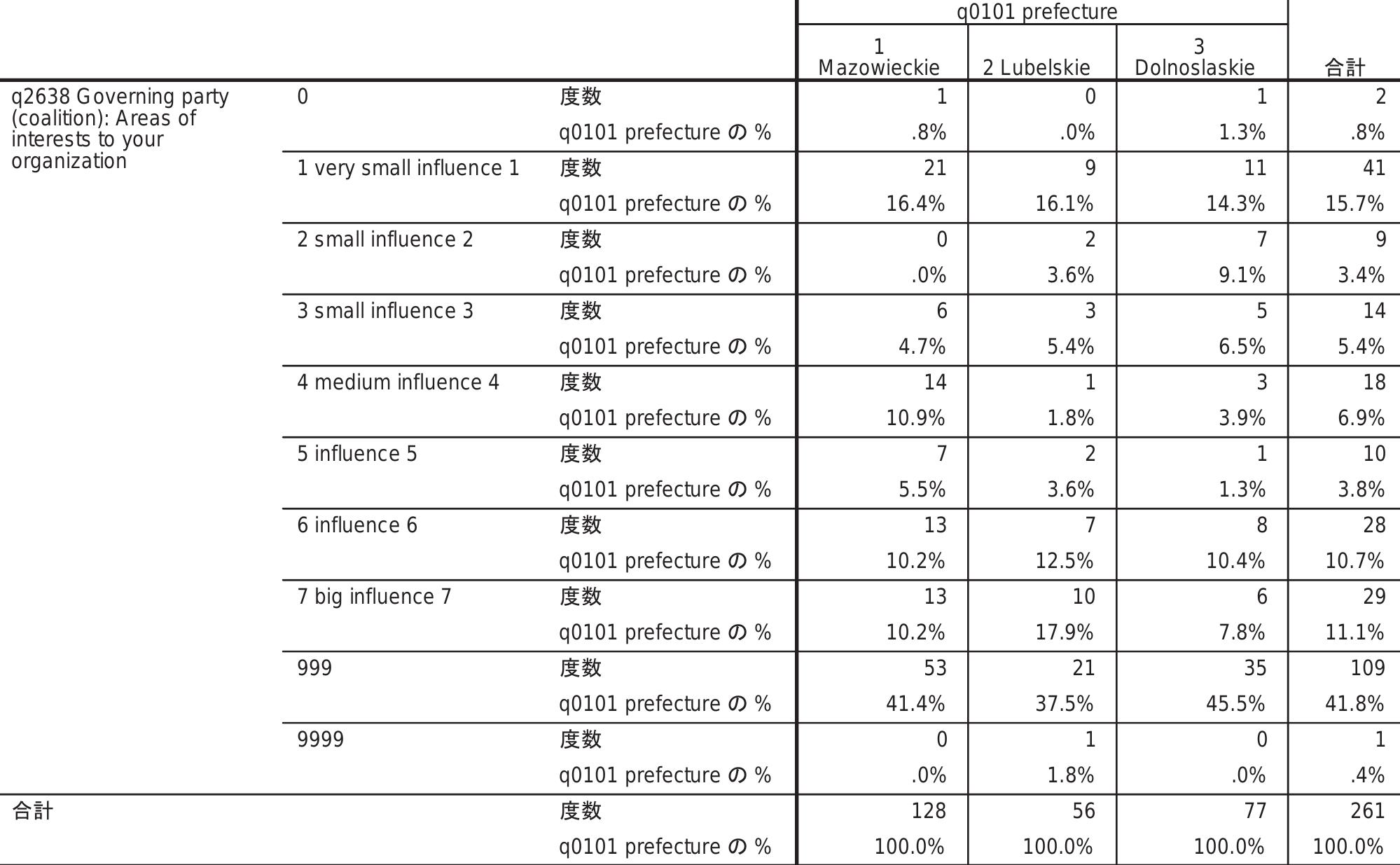









































































































































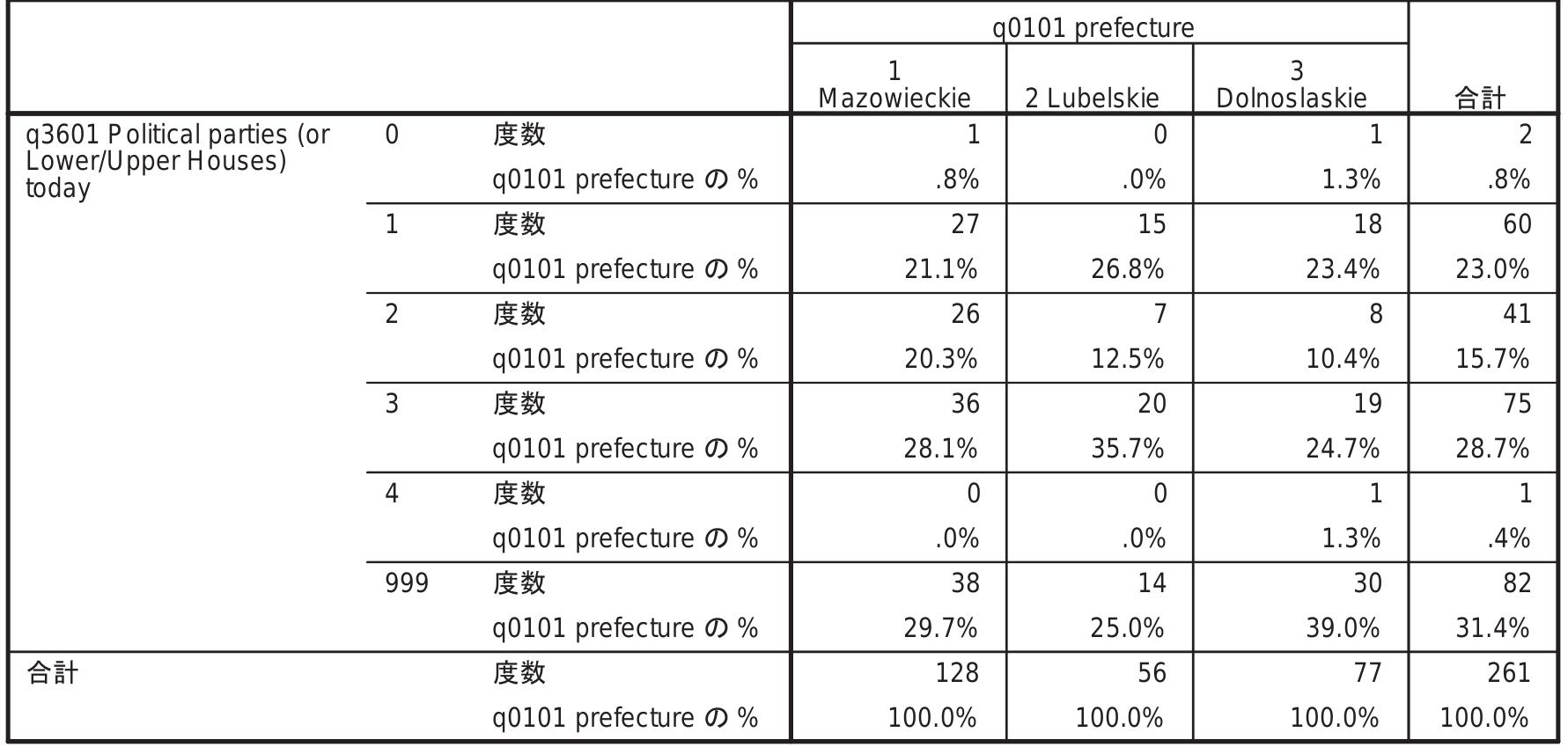




































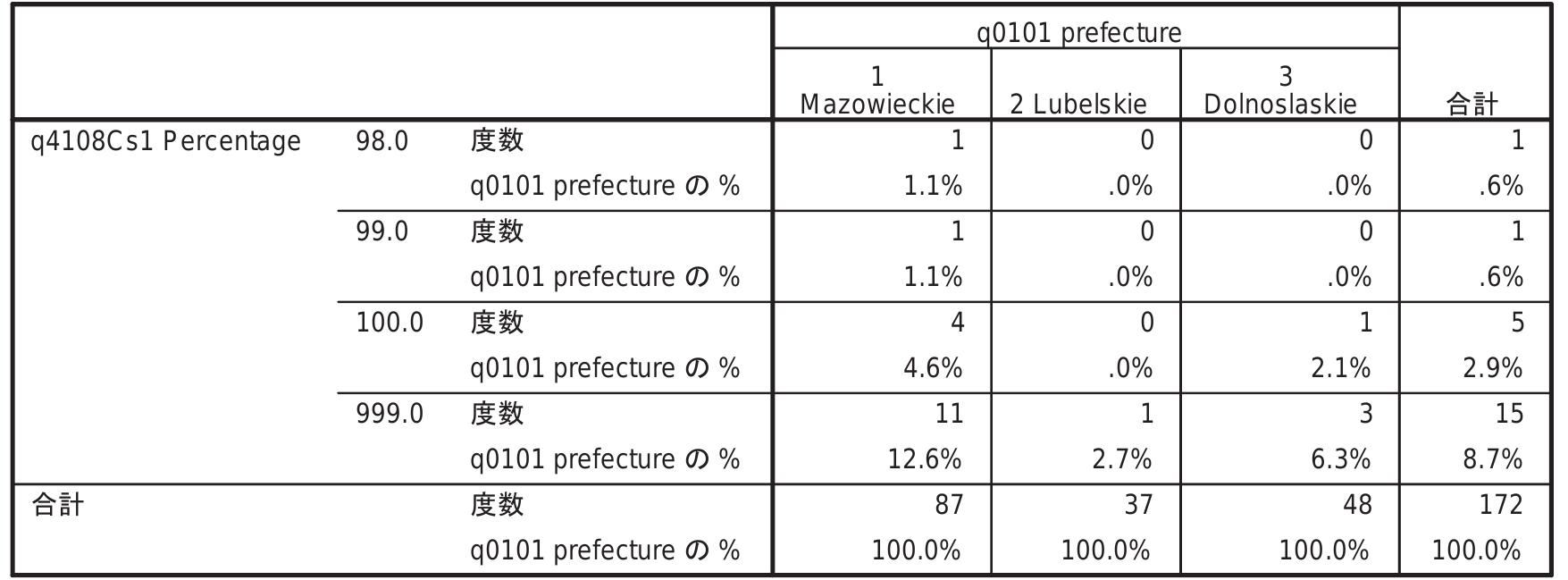






























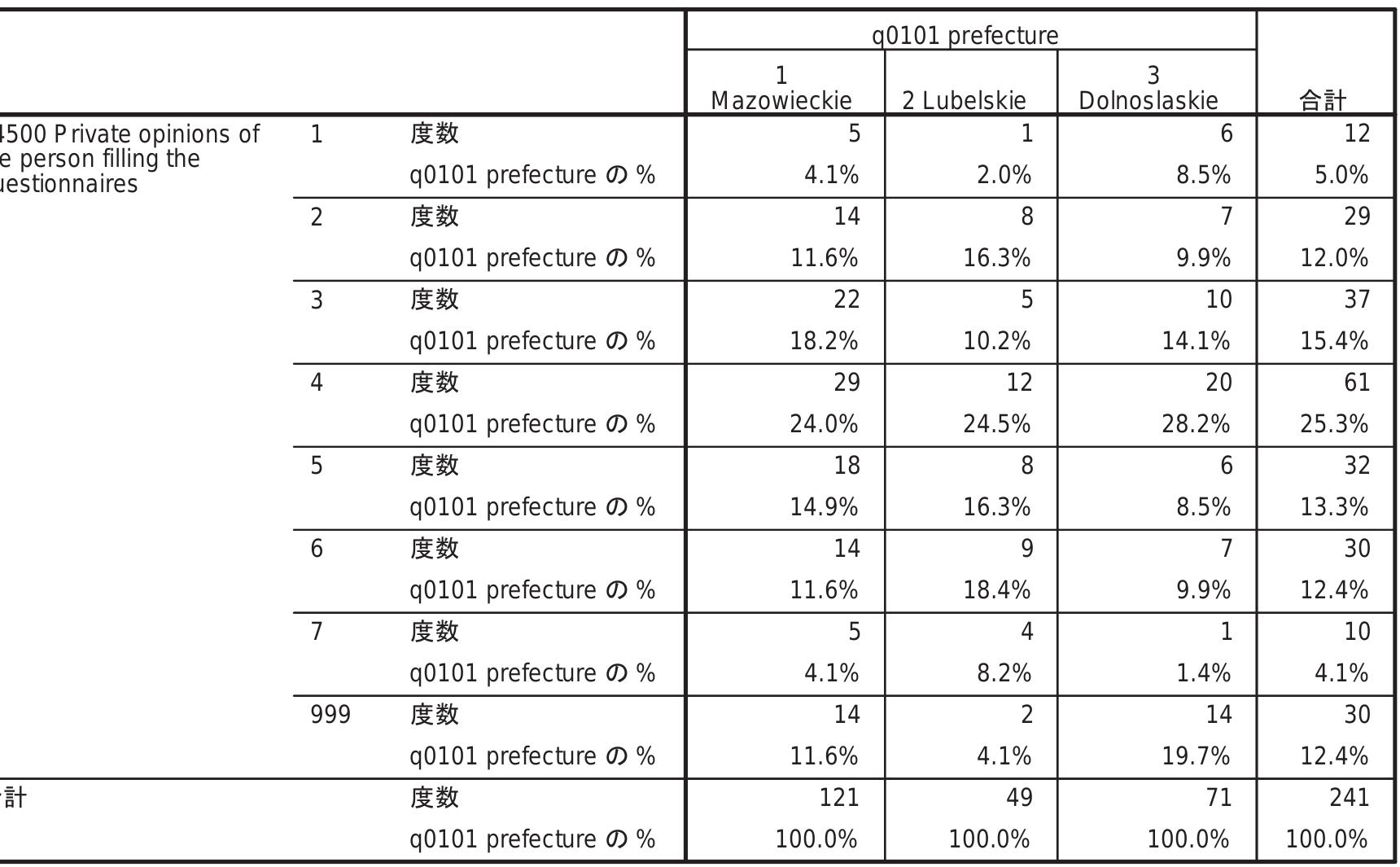





























Related papers
2016
The sampling frame of the FPN survey was population registers (Basisregistratie Personen, BRP). Newcomers who intend to remain longer than four months in the Netherlands are required to register in the municipality where they reside. Names and addresses of sample members were drawn by Statistics Netherlands, based on several criteria. The potential respondent: was born in Poland and had at least one Polish parent was registered in the Dutch population register (BRP) at the time of sampling had registered for the first time in the Dutch population register between 1 st of January 2004 and the time of sampling (August 2014) was between the age of 18 and 49 at the time of the most recent registration The age range differs from the one in the GGS (i.e. 18-79) and this difference is driven by the population characteristics-Polish migrants in the Netherlands are relatively young (mean age of 34) and including older persons in the sampling frame would not result in relevant data. The goal of the FPN was to gather information on approximately 1,000 respondents and to achieve a response rate of 50%. Based on these requirements, Statistics Netherlands drew a sample, using simple random sampling (all population members have the same probability of being selected into the sample), ensuring that Polish migrants residing all over the Netherlands were selected. This sample was drawn in two rounds. The first selection took place in August 2014 and it consisted of 2,631 persons (including a margin for not valid addresses). During the fieldwork, it became apparent that the number of addresses that were not correct (i.e. respondent did not live there) was higher than anticipated, and in November 2014 the second batch of addresses was drawn (1,500 addresses). In total 4,131 addresses were selected. Not all addresses drawn in the last round were used in the study. The precise description of the sending out procedure follows in section 5.3. Once the final sample was created, Statistics Netherlands passed the addresses on to GfK who contacted the sampled Polish migrants. Since the population registers do not include telephone numbers, GfK matched the sample with telephone numbers registered in databases used for marketing research. Start fieldwork Week 40 Week 46 Week 49 Week 51 Reminder letter Week 42 Week 49 Week 51 Week 2 Reminder card Week 43/44 Week 51 Week 52 Week 3 Telephone contact (if telephone number known) CAPI round Week 44-51 + Week 2-3 Week 2 Week 2 Week 4 End fieldwork Week 4 Week 12 Week 12 Week 14 Data release to EUR Week 17 Week 17 Week 17 Week 17 * These numbers differ from those mentioned earlier. After screening of sub-samples 1 and 2, it became evident some of the sample members changed their place of residence. The updated addresses from those two sub-samples formed a sub-sample 3. These updated addresses were subtracted from the totals in the sub-samples 1 and 2. Consequently, the number of sample members in sub-samples 1 and 2 differs from the number of initially drawn addresses.
2011
In two experiments, we analysed how different forms of verbalisation of the appearance of a perpetrator influenced future recognition of that perpetrator by witnesses and persons who had only been provided with a description of his appearance. During the first experiment, 75 participants watched a film showing a robbery, and then, depending on the group: 1) did not describe the perpetrator’s appearance, 2) provided a description, 3) described the perpetrator’s appearance, filling out a Face Rating Scale (FRS) which requires assessment of multiple characteristics of a face on rating scales. After two weeks, persons were supposed to recognise (identify) the perpetrator from among presented pictures. In the second experiment, participants (N = 50) received either a perpetrator’s description or a filled-in FRS scale and were also supposed to recognise the perpetrator from among presented pictures. Amongst persons who had seen the perpetrator, provision of a description did not reduce th...
Journal of the Market Research Society, 1996
Routledge eBooks, 2012
Slovenian Journal of Public Health, 2011
The aim of the study was to assess the degree of individual and social identity of the elderly in institutional care. The paper analyses the data, hitherto unavailable in Slovenia, in order to contribute to the caregivers' knowledge of how to help their clients preserve and maintain their dignity, self-respect and identity. Methods: A cross-sectional study was conducted during the period December 2005-January 2006. Included in the study were 164 elderly residents of 20 old people's homes. The study instrument incorporated 36 statements addressing individual (15), narrow social (18), and broad social identity (3), which the respondents were asked to agree or disagree with. The Mann-Whitney and Kruskal-Wallis tests were used to facilitate data analysis of the respondents' gender, age, education and original residence environment. Results: The results of the study showed no correlation between the degree of individual identity and the respondents' gender, age, education and original residence environment. The correlation between the narrow (p=0.007) and broad (p=0.016) social identity and the residents' educational level, however, was statistically significant. In the latter two cases identity was least pronounced in most educated respondents. Conclusion: Educational level of old people's home residents correlates positively with their social identity crisis. The findings may contribute to caregivers understanding and recognition of their role in assisting the more educated elderly effectively alleviate or prevent their social identity crisis. In view of the foregoing, the residents' quality of life and their overall well-being can be improved. Izvirni znanstveni članek UDK 364.65-053.9(497.4):316 Izvleček Namen: Vse več starostnikov v Sloveniji preživi zadnje obdobje svojega življenja v domovih za starejše občane (DSO). Stanovalcu je tam odvzeta skrb za samega sebe, to pa pomeni tudi razkroj odnosa do lastne identitete. Da bi pomagali oskrbovalcem pri premagovanju krize identitete njihovih varovancev, smo se namenili oceniti stopnjo individualne identitete ter ožje in širše družbene identitete starostnikov glede na nekatere njihove značilnosti. Metode: Presečno pregledno raziskavo smo izvedli v decembru 2005 in januarju 2006. Udeležilo se je je 164 starostnikov iz 20 DSO. Merski instrument je bil vprašalnik, sestavljen iz 36 trditev (individualna identiteta 15, ožja družbena identiteta 18, širša družbena identiteta 3), katerim so udeleženci pritrdili ali pa jih zanikali. Razlike glede na spol, starost in izobrazbo starostnikov ter izvorno socialno okolje, v katerem so živeli pred preselitvijo v DSO, smo testirali z Mann-Whitneyevim testom oziroma Kruskal-Wallisovim testom. Rezultati: Rezultati so pokazali, da stopnja individualne identitete ni povezana s spolom, starostjo, izobrazbo niti z izvornim socialnim okoljem. Po drugi strani pa sta bili tako stopnja ožje identitete (p=0,007) kot tudi stopnja širše družbene identitete (p=0,016) statistično pomembno povezani s stopnjo izobrazbe. V obeh primerih je bila identiteta najslabše izražena pri najbolj izobraženih udeležencih raziskave. Zaključek: Kaže, da je kriza družbene identitete pri starostnikih, ki bivajo v DSO v Sloveniji, pomembno povezana 1 Univerza v Ljubljani, Zdravstvena fakulteta, Zdravstvena pot 5, Unauthenticated Download Date | 7/4/16 8:21 AM z njihovo izobrazbo. Ti rezultati lahko pomagajo oskrbovalnemu osebju v DSO, da s primernejšim pristopom k bolj izobraženim varovancem učinkoviteje premaguje izraženo krizo. Vse to lahko pomembno vpliva na kakovost življenja obravnavane skupine prebivalcev DSO v prihodnosti. Ključne besede: individualna identiteta, družbena identiteta, domovi starejših občanov Zaletel M., Levec T., Mihelič Zajec A., Zaletel Kragelj L. Individual and social identity of residents of old people's homes in Slovenia Unauthenticated Download Date | 7/4/16 8:21 AM
Zenodo (CERN European Organization for Nuclear Research), 2023
In 2021, 2022, and 2023, as part of the ySKILLS project, we explored how the digital skills of young people from six European countries change over time. In three waves of research, the same group of teenagers answered questions about their use of digital media every year. This report briefly summarizes the results of the second wave of research, conducted in a sample of 1,340 Polish students aged 13-17 from 12 schools (primary and secondary) in the Wielkopolskie and Mazowieckie voivodships. In the report, we first contextualize the research by describing the children's background, focusing on their individual and social characteristics. We then provide data on children's daily internet access, such as time spent online and digital devices used. Below is a list of the most common and most minor everyday activities of children online; data on the digital skills of Polish teenagers in four dimensions (technological and operational, information and navigation, communication and interaction, content creation and production). Finally, we present data on the main digital risks experienced by Polish children. Disclaimer: This project has received funding from the European Union's Horizon 2020 Research & Innovation programme under Grant Agreement no. 870612. The information in this deliverable reflects only the authors' views and the European Union is not liable for any use that may be made of the information contained therein.
One of the tools most used in the past decades for data collection is the questionnaire´s based surveys. In this article a theoretical review of the design, adaptation and content validity process of a questionnaire is performed. A case study of this process is presented to have a practical example of the of this research stage.
Related papers
European Scientific Journal, ESJ, 2017
Systematic errors can significantly affect the results of research. Interviewer errors and respondents (participants) errors constitute a large portion of systematic error sources. The purpose of this study is to show whether there is a difference between the results of the questionnaire marked by the respondent and the results of the questionnaire marked by the interviewer. For this purpose, the responses of 150 participants to the questionnaire were compared and analyzed. The findings of the analyze reveal that there is a difference between the results of the questionnaire marked by the interviewer and the results of the questionnaire marked by the respondent. Another result is that the reliability of the questionnaire data marked by the interviewer is lower than other group. This study is part of a research carried out with the support of The Scientific and Technological Research Council of Turkey (TUBITAK-115K155) and the results provide preliminary information.
Electronic Markets, 2020
Streszczenie: Tożsamość, jako definicja siebie, samookreślenie, jest pierwotnym doświadczeniem człowieka i podstawą kształtowania się jakości życia. Zmiana i ugruntowanie się tożsamości osób w wieku późnej dorosłości zamieszkujących polską i czeską część Śląska Cieszyńskiego dokonuje się w przestrzeni pogranicza państw, narodów, społeczności, kultur itp. Kreują ją wzajemne oddziaływania, relacje i więzi międzyludzkie, znaczenia, identyfikacje, elementy materialne oraz infrastruktura. Te warunki stawiają jednostkę przed koniecznością wyboru, aktywnego działania kreującego jej życie. Niniejsze opracowanie jest komunikatem z badań przeprowadzonych w Cieszynie oraz Czeskim Cieszynie. Celem podjętych poczynań badawczych jest poznanie typów tożsamości u osób w wieku późnej dorosłości zamieszkujących polską i czeską część Śląska. Wyniki przeprowadzonych badań wskazują, że u osób w wieku późnej dorosłości zamieszkujących polską i czeską część Śląska Cieszyńskiego dostrzec można różne typy tożsamości: jednowymiarową, dwuwymiarową, wielowymiarową (wzbogaconą).
QUESTIONNAIRE I represent the Bucharest University for a pole we realise in over 100 localities in the country. We would like to know people's opinions on different problems or changes in the common everyday life. In order to discuss these problems, you were randomly chosen. Should you agree to answering our questions, we hope not to take more than 50 minutes of your time. The answers we will get won't be communicated to anybody in this present form. We are only interested in counting the persons which have an opinion or another. The results of this pole will be published in the press and, we hope, will help changing people's lives into better.
High non-response rates constitute a major threat to survey quality, since non-response bias is likely to be high. One of the possible ways to cope with this situation is to pay more attention to the organization and implementation of the fieldwork. This paper tried to study the role of fieldwork efforts in relation to survey participation. It focused in particular on the history of the contact procedure and the role played by the number of contact attempts on the one hand and the number of effective contacts on the other hand. Use was made of Belgian data from the European Social Survey (ESS) Round 2, a Europe-wide, longitudinal type of survey implemented in 2004-2005. Standardized contact forms used in the fieldwork implementation period are rich in data and contain detailed information on the contact process between the interviewer and sampled unit. Complementary use was made of the life table method, Cox regression model, and pathway analysis to analyze these forms. The research results obtained in this paper confirmed the importance of field work strategies as a determinant of survey cooperation. Its contribution was situated in the fact that it pointed to the importance of taking account of the full history of the contact procedure. It would seem to argue in favor of making a clear distinction in field work guidelines and in the analysis of contact forms later on between contactability and effective contacts (face-to face) and increasing the number of each category. Finally, based on our analysis some recommendations are made with regard to the fieldwork guidelines.
2015
Personalisation in advance letters does not always increase response rates. Demographic correlates in a large scale experiment
International Journal of Sociology
The introduction describes the Polish Panel Survey (POLPAN), on which all articles in this issue are based. POLPAN is a survey among a random (probability) sample of the adult population in
2012
Wszelkie prawa zastrzeżone. Każda reprodukcja lub adaptacja całości bądź części niniejszej publikacji, niezależnie od zastosowanej techniki reprodukcji, wymaga pisemnej zgody Wydawcy Wydawnictwo Uniwersytetu Ekonomicznego w Katowicach ul. 1 Maja 50, 40-287 Katowice, tel.

Loading Preview
Sorry, preview is currently unavailable. You can download the paper by clicking the button above.
 Beata Bochorodycz
Beata Bochorodycz
